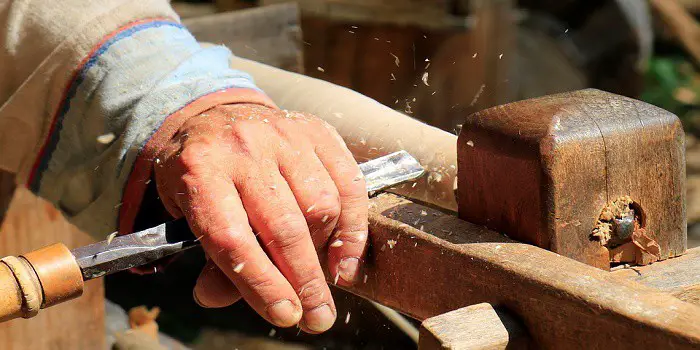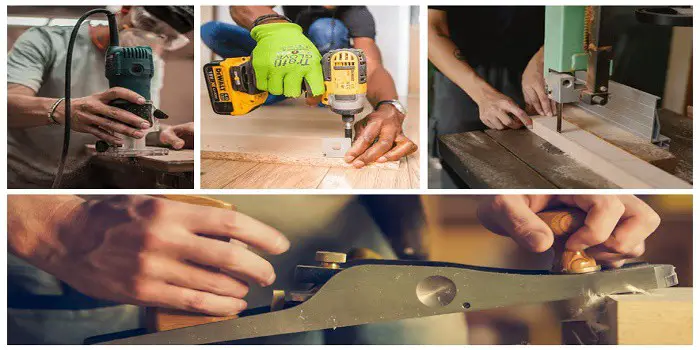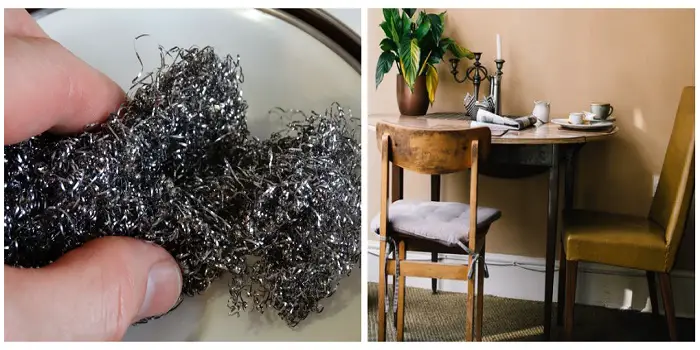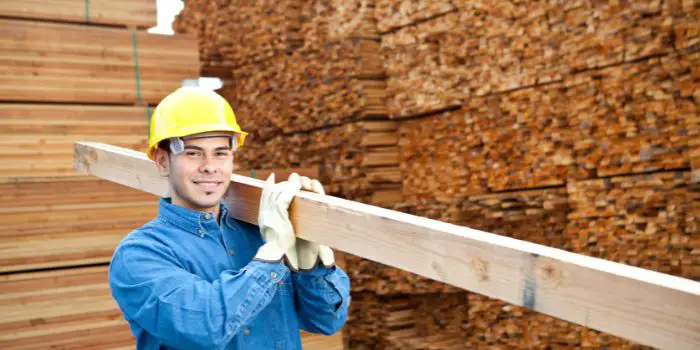
For the last century, contractors have used traditional wood studs and metals with high gauges for framing load-bearing walls.
While both of them can be a great option based on the specific construction requirements there are differences between both you should know about.
The price, construction, along availability of labor usually decide whether a contractor uses wood studs or metal.
Below, we’ll look at the drawbacks and advantages of wood studs and metal studs both in residential and commercial construction. So, make sure you go through these pros and cons before making your final decision…
2×4 Metal Studs
Manufacturing metal studs for wall framing usually involves making them out of galvanized steel strips in cold rolling machines.
Since most of these studs are used for structural buildings, usage of a heavier gauge is required.
Benefits
Humidity and moisture aren’t things to worry about with studs made up of galvanized metals.
This also means that they don’t rot or warm up fast and will maintain their sturdy, straight nature for a very long time period in the building.
The high tensile strength of metal-made studs also makes them strong against intense wind, and they are also resistant to termites or other bugs.
Metal-made 2×4 studs are both lightweight and hollow, so you can tote them around the job site easily.
Besides being convenient, they are also recyclable and eco-friendly – there are no volatile organic compounds (VOCs) to worry about.
Drawbacks
The major disadvantage that comes with metal studs is cutting them in equal parts – which can be both hazardous as well as difficult.
Usually, you will need a miter or a circular saw (that is equipped with a high-tensile metal blade) to cut the studs in equal parts.
Secondly, when you’re installing drywall screws in metal studs, it can be just as tiring and requires both patience and practice.
Because there is a limited availability of metal studs in various sizes, it can take a long time to complete the installation.
Metal studs also do nothing to contribute to the energy efficiency of a structure because of thermal bridging.
This lets heat move from the interior of a building to its exterior through the most conductive part, which becomes the metal studs. This can make a structure cold and drafty while also forming black stains on the cold parts of the wall.
Though metal does not combust, it can lose its strength when exposed to high temperatures such as a fire. This can make them more vulnerable to collapsing or buckling.
Furthermore, since it is an active heat conductor, metal studs have the potential to ignite any materials that lie adjacent to them. This can also cause fires to spread through a building more easily.
Studies have also shown that, in terms of a framing system alone, 2×4 metal stud frames can cost as much as 18 to 20 percent more than a wood frame system.
The acoustics in a metal-stud design are also something to consider, as they can cause the echoing of loud noises with sound waves reflecting right off of the hard surfaces.
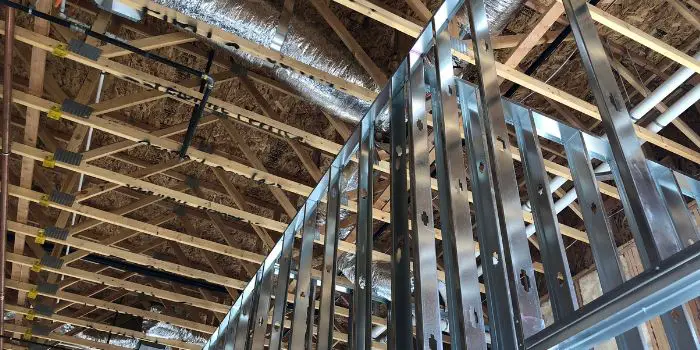
2×4 Wood Studs for Framing
Many contractors are both comfortable with and knowledgeable about wood-stud construction. This makes them use wood over other kinds of building materials and methods.
Even so, contractors should compare the cons against the pros of wood construction before committing to one or the other.
Advantages
Contractors who are environmentally conscious will usually choose wood studs since they are renewable.
Wood studs is said to be a greener option due to the fact that the life cycle of steel produces around 25% more greenhouse gases than wood. These will also need less energy to create and transport than metal studs, which adds to their eco-friendliness.
Wooden 2×4 studs are also readily available and easy to come by unlike metal studs. They can be purchased at virtually any lumber store, making them quite convenient.
After installation, these studs also make it simple to repair and maintain wooden structures.
Disadvantages
The key drawback of using wood studs is that creating fire-resistant structures is a real challenge since wood is so combustible and can easily spread flames once they reaches it.
The fact is if you really want to build a wood stud structure that is disaster-resistant, you should expect to spend up to 30 percent more than you would on a standard wood-framing construction.
Wood studs will also continue to prove their relative weakness in the fact that termites can easily damage them and end up costing hundreds and thousands of dollars for repair.
You will require special equipment (such as chemicals and adhesives) along with professional help for protecting wood studs, which can impact your budget significantly.
Moisture can accumulate as well, in the walls and gaps of wood stud structures, which can of course lead to mold that can further degrade the structure.
Furthermore, the low thermal mass of 2×4 wooden studs generates thermal bridging, which can also reduce the energy efficiency of the entire wall structure.
Lastly, energy codes now require wood to be thicker, which means more studs must be used, and the quality of these studs has diminished over time as well, meaning more work and waste.
Wood vs. Metal Studs Comparison Table
| Feature | Metal Studs | Wood Studs |
|---|---|---|
| Durability | Resistant to rot, termites, and warping | Prone to rot, termites, and warping over time |
| Fire Resistance | Non-combustible; does not burn | Highly flammable; can spread fire |
| Moisture Resistance | Ideal for damp environments (e.g., basements, bathrooms) | Can absorb moisture, leading to mold and decay |
| Weight | Lightweight and easy to handle | Heavier and bulkier |
| Strength | Strong but may require reinforcements for heavy loads | Naturally strong and can support heavy items easily |
| Cost | Typically more expensive | Usually more affordable |
| Ease of Installation | Requires special fasteners and tools; learning curve involved | Easy to cut, nail, and work with using basic tools |
| Customizability | Limited flexibility for modifications | Can be easily modified, cut, and shaped |
| Environmental Impact | Recyclable and eco-friendly | Renewable but contributes to deforestation |
| Best Used For | Commercial buildings, fire-resistant areas, damp environments | Residential homes, DIY projects, heavy load-bearing walls |
Conclusion: Metal Studs vs. Wood Studs – What to Use?
While considering all the above things, many DIY lovers will see there is little benefit to using metal studs over traditional wooden ones for framing building structures.
First-time builders that use structural steel studs will have to navigate the learning curve that makes installation a bit slower as opposed to wood studs.
Even so, there may be areas where wood is preferred to metal studs and vice versa. It basically comes down to individual needs, location, and budget in different circumstances.
If you prioritize strength, longevity, and fire resistance, metal studs may be the better choice. However, if you want affordability, ease of installation, and flexibility in design, wood studs are the way to go.
Share the post "2×4 Studs Made of Metal vs. Wood – What’s Better for Framing?"

Hi, I am Mark Garner a professional carpenter, woodworker, and DIY painter. I live in the small city of Peoria, Arizona as a semi-retired woodworker. I have started this blog with a simple motive to help you with my wood experience in this sector. If you like to know more about what I love doing and how it all got started, you can check more about me here.


